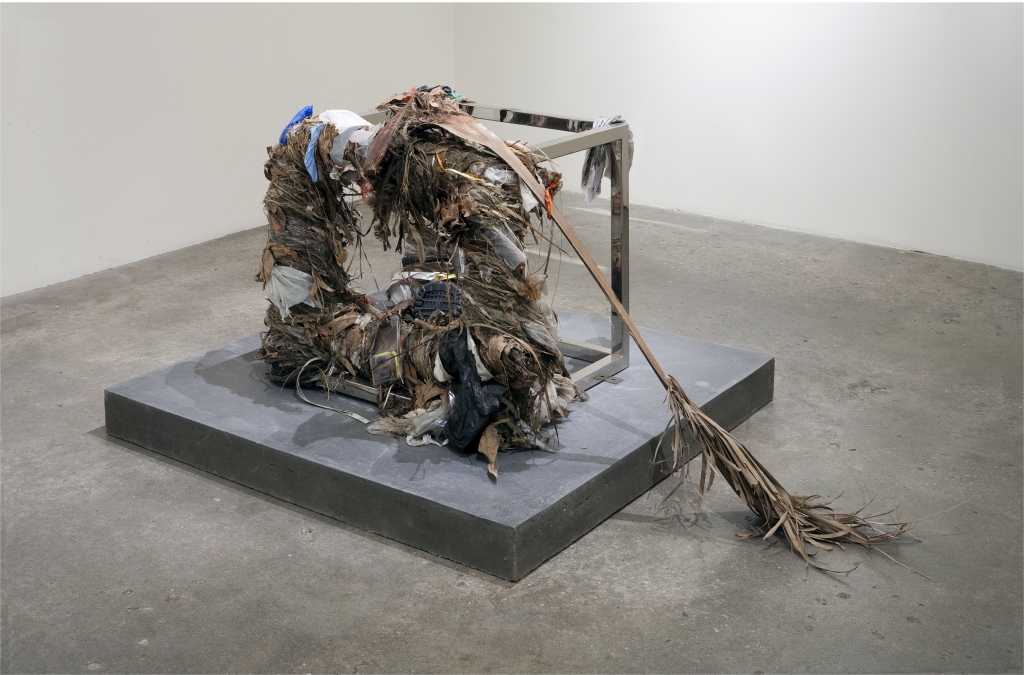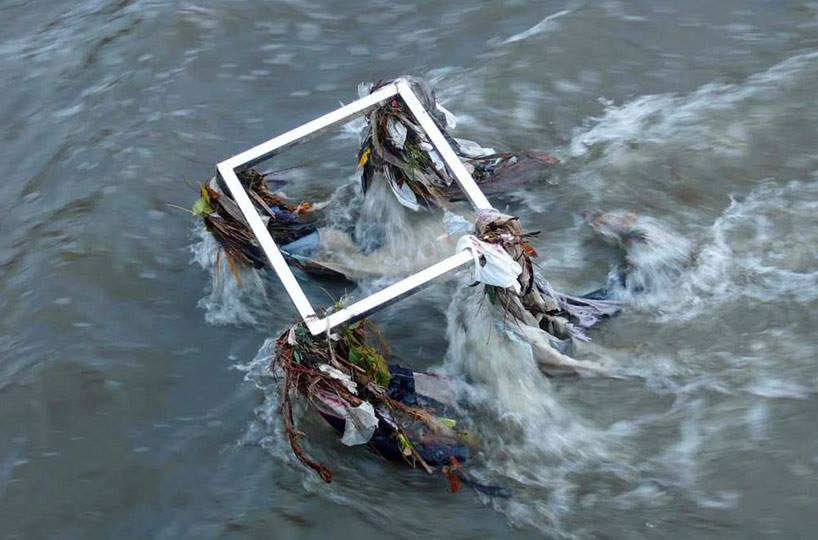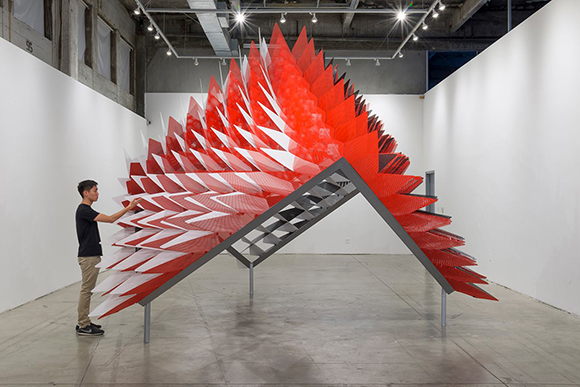
Heather Flood
Punk’d

Punk’d
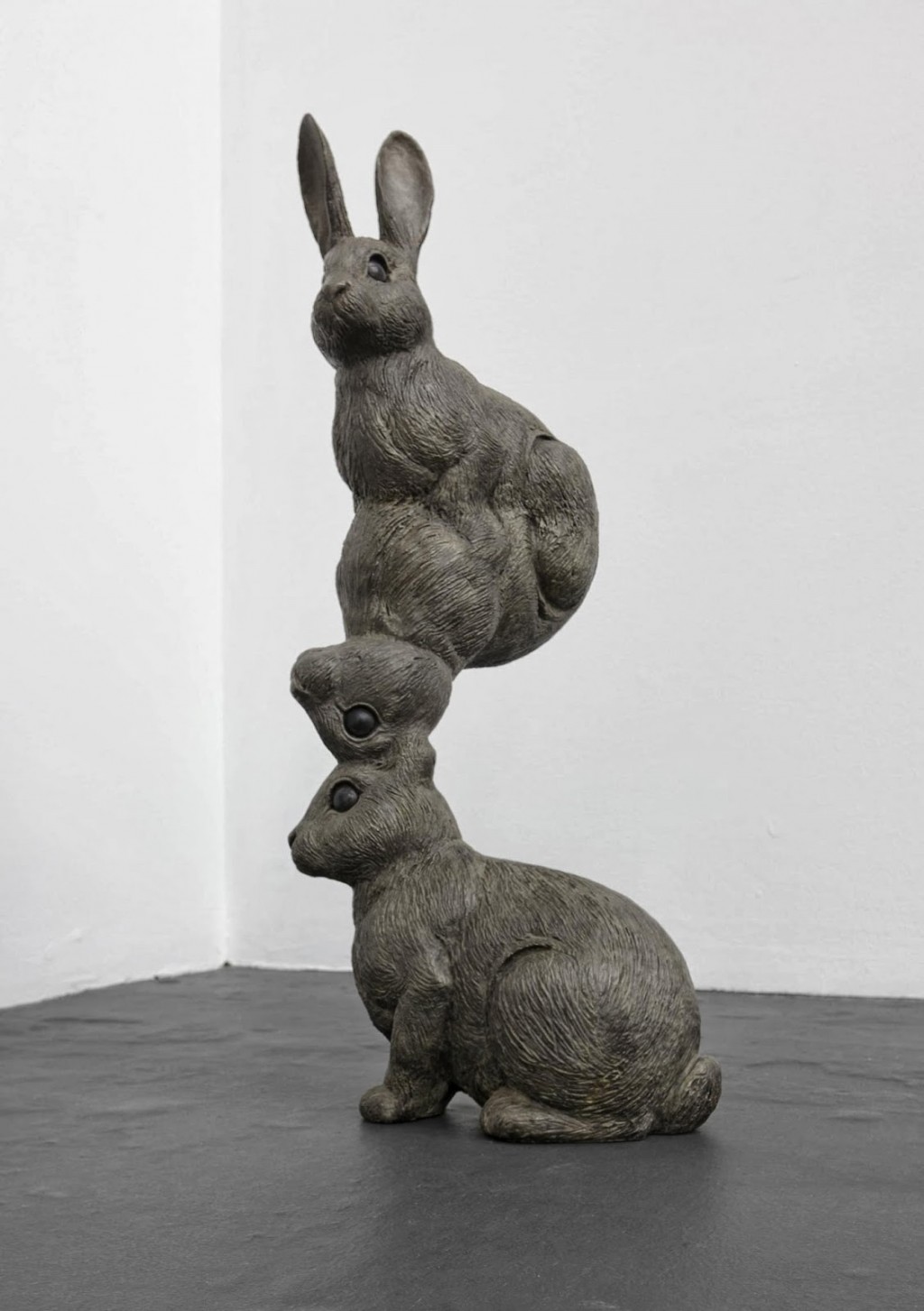


Angelas Flood
Angela’s Flood (El diluvio de Angela), inspirado en el panel central de El Jardín de las Delicias, es un paraíso construido para personajes femeninos, un espacio alegre que cuestiona los reiterados comportamientos violentos y sexistas a menudo asociados al mundo de los videojuegos. El título procede de la protagonista, Angela Belti, una musculosa luchadora de la serie Power Instinct (Atlus, para Arcade, 1993) cuya apariencia desafió el estereotipo de los videojuegos retro llenos de mujeres esbeltas y semi desnudas. Una variedad de sprites, entre ellos personajes marítimos, pequeños elfos e insectos, conviven en esta utopía elaborada en 2000 líneas de HTML.
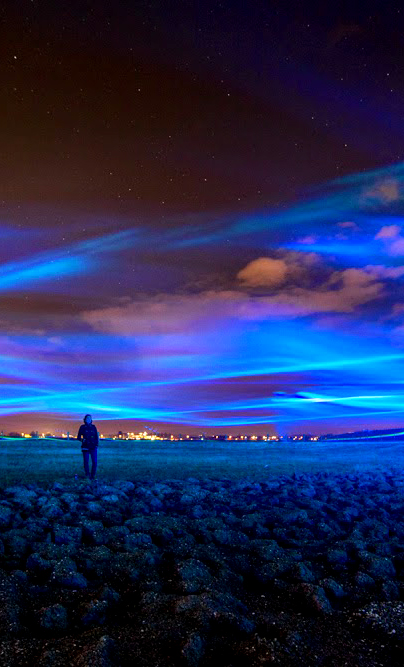
waterlicht
Dubbed “the northern light of the Netherlands” by Studio Roosegaarde, the Waterlicht installation is designed to create the impression of a “virtual flood”.The waving lines of light spread across 1.6 hectares bear a resemblance to the northern lights – the natural phenomenon created when charged particles enter the Earth’s atmosphere – when viewed from underneath.

State Gallery
Like a dancing cube shimmering in titanium, the new State Gallery of Lower Austria is placed between the picturesque inner cities of Krems and Stein, and links these with the surrounding natural and river landscape. The spherical curvature and the strongly outward-projecting external walls presented a challenge: titanium shingles and glass panes were individually produced, having been calculated in 3D. Inside, light-flooded areas alternate with daylight-free levels that can be used as required. The project is a strong illustration of the capabilities of the Vorarlberg architectural practice of Marte.Marte.
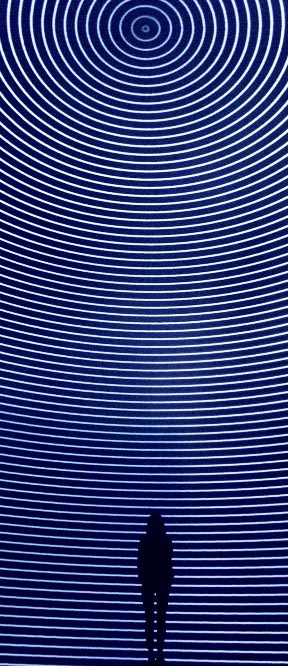
Versus
Elaborated by the French/Japanese duo Nonotak, ‘VERSUS’ is an immersive A/V experience that questions the relationship between 360° image and sound. The viewer finds himself submerged, at the centre of a perfectly geometric environment that constantly redefines space by breaking distances between projection, audience and screen. The work gives the illusion of a new type of architecture, a world created from distortions that shatter boundaries, and that brings the idea of infinity.

Breaking News: Flooding of the Louvre
Natural disaster increasingly linked to a climate change has arrived to the museum of Louvre, which responds to the flooding of Paris in 2018. The artwork also respresents the issue of cultural leftover. Recycling is the main value of the process. By destruction of model that was a part of previous project Put Your Head into Gallery, the leftovers are reconstructed and new meanings and possibilities are created. The flooding of the Louvre Museum speaks about news culture and our fluctuating perception of disasters as it is seen through media. The scale of the disaster is often difficult to assess from news coverage. In the work “Breaking News” flood goes slowly into the room of the Louvre, letting the viewer to gradually watch the destruction of interior. it brings the viewer shochinkly close to what has not happened but easily could have, viewer sees the before and after effect in a highly visualized manner, which is as convincing and threatening, as fake.

High Tide
For her show High Tide, which was most recently exhibited at the Centre Pompidou, Humeau sculptured a collection of futuristic marine mammals and set about imagining what they might sound like if they could recount complex narratives. With mechanical clicks and whistles, similar to those made by whales and dolphins, Humeau’s creations tell of a great flood – an apocalyptic deluge that sparked the birth of their culture. “These floods”, she explains, “might be the consequence of climate change and rising oceans and the air becoming toxic. Maybe the great flood is actually us. As humans, we are the flood.”

梅拉妮·柏娜桥
Nocturnal Gardening
Photographs of painted people, tinted by sunlight flooding in through colorful tissue paper, are interspersed with delicate ferns and towering bamboo sticks. A lithium drone within the gallery’s white walls is broken up by Night Soil – Fake Paradise, an experimental documentary film by Melanie Bonajo in which women from Brooklyn candidly discussion their deeply personal experiences with ayahuasca. Some of the revelations are blissful and mystic while others turn completely horrifying, melting the psyche down into utterly submissive goo — Bonajo’s way of reminding us of the immeasurable power of psychedelic substances.
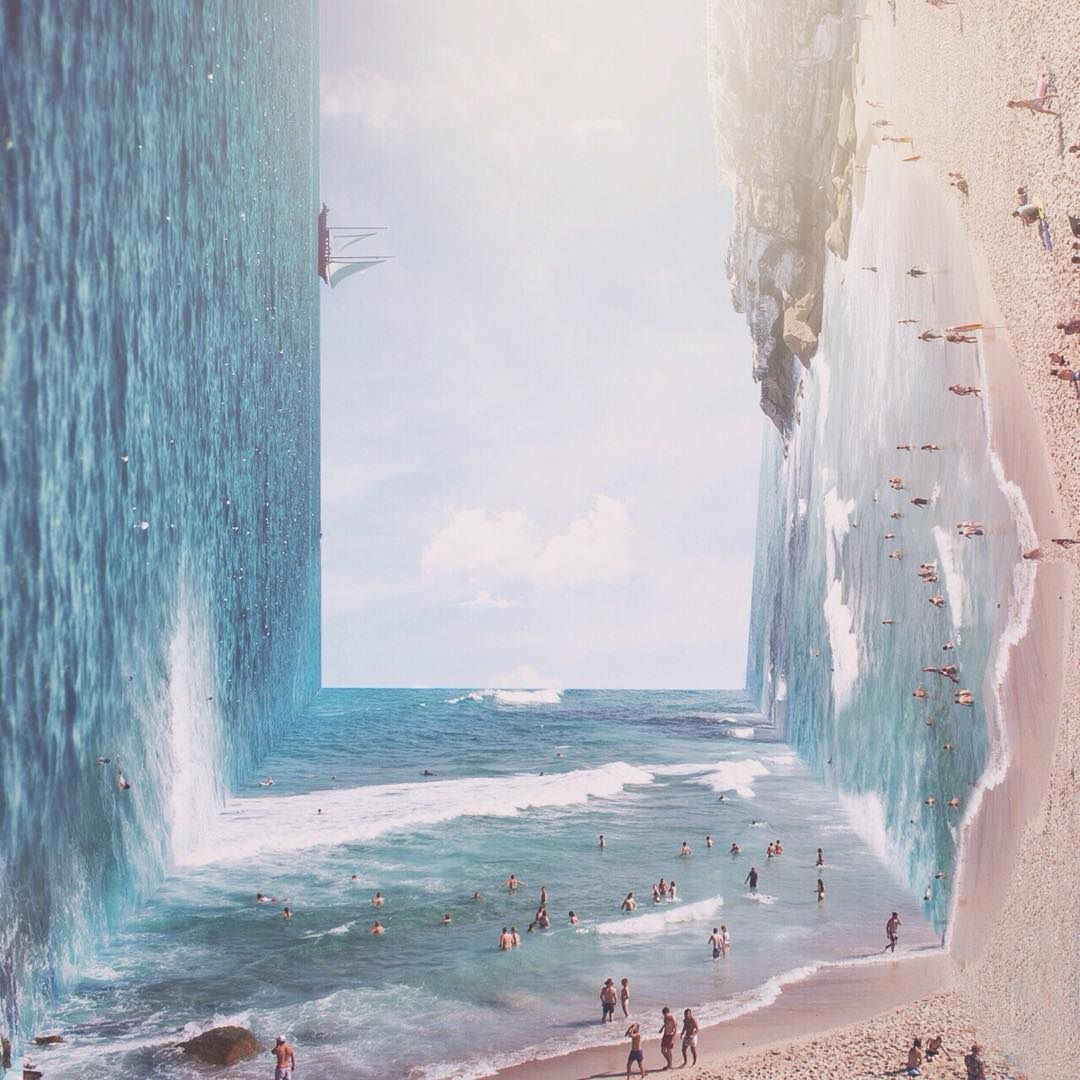
Jati Putra Pratama turns landscape photos into surreal works of art by contorting the scenes to include unusual angles. The Jakarta, Indonesia, graphic designer made waves on Reddit after posting one of his pieces, spawning a flood of copy-cat work, and even a tutorial. Many online commentators write that Pratama’s work is reminiscent of the physics-defying scenes from the hit-film Inception, but this isn’t Pratama’s only style: his Instagram features more traditional (if there can be such a thing) surreal photos as well.
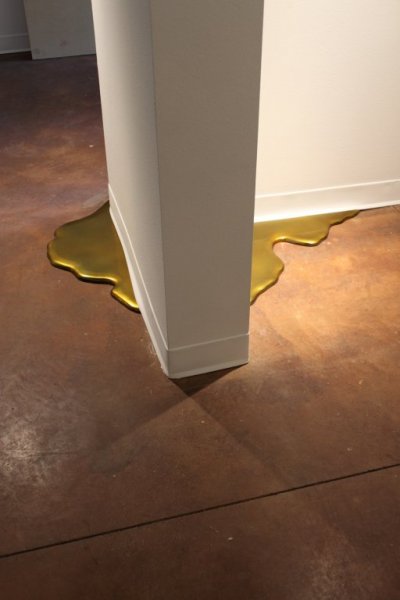

Tree Virus
“Tree Virus” sculpture wasn’t much to look at: a dead, black tree rooted in a craggy white ball suspended over a dirt pit, all of it covered by a plastic igloo. Built on a college campus in the Netherlands in 2008, the whole thing might have been leftover scenery from a Tim Burton film if it weren’t for the outrageous smell.
Inside the igloo, a heady mix of peppermint and black pepper saturated the air. It flooded the nose and stung the eyes. Most visitors cried; many ran away. Others seemed to enjoy it, laughing through the tears.

Taipei Museum of Contemporary Art
This building proposal challenges the traditional definition of a museum and the conventional relationship between building and site. The ground floor of the building is reduced to a nominal footprint, enclosing only enough space for basic services, structure and ticketing functions. The ground plane is primarily reserved for exterior public space, including an art park, Hall of Fame, and garden walk. The bulk of the program and building mass are split by the open ground floor. Half of the building is coupled with the earth while the other half hovers in the air. The purpose is twofold; to minimize the damaging effects of extreme local weather by harnessing environmental flows toward productive outcomes and to re-conceptualize the identity of a modern art museum. The manicured roof plane of the below ground program is pocketed with water absorbing vegetation and catchment systems, while the hovering museum above expands to form open atriums, allowing diffuse light to brighten the space and passive airflow to comfortably condition the building.The program of the museum is interconnected. The Contemporary Museum of Art, Children’s Museum of Art and Administration are located within the floating mass. The lecture hall, parking, art resource center, library and classrooms are located below ground. The programs below ground are easily accessible and directly connected through vertical circulation tubes, providing both structural support for the floating mass above and space for movement systems, such as escalators, stairs and elevators between levels. All of the below ground programs are flooded with diffuse light passing through skylights that penetrate the landscape.

تويو ايتو
伊东丰雄
טויו איטו
伊東豊雄
도요 이토
Tower of Winds
During the day the perforated metal panels that cover the Tower of Winds reflect the city image and make the design appear humble and simple. But during the night, it gets lit up in an ever-changing combination of light intensity and colors. Using computer software, the lighting follows the wind speed and noise levels changing the Tower’s appearance accordingly. The Tower of Winds features more than 1300 light bulbs and 42 flood lights and neon rings (on each floor). The small lights change their colors according to the wind’s noise level and the rings change their intensity according to its speed.
Basically, the Tower of the Winds by Toyo Ito is a wind indicator in a constant relationship with the city and the natural environment, a junction between the two. It is placed at the train station area, welcoming the passengers arriving in Yokohama and its functional role is accommodating another natural element. Surprisingly the Tower of Winds houses the water tanks for the air-conditioning system of the underground mall below. The Tower is not a new construction, but a re-designing of an old concrete tower that already existed there since the ‘60s.

The Artificial Nature Project
In The Artificial Nature Project a new encounter between human and non- human performers emerges from the following questions:What does it mean to make a choreography for materials where human movement is no longer in the center of attention?How can one address the force of things, materials, objects and matters as something that acts upon humans?What is the relationship between the animate and the inanimate world?
The outcome is a performance that literally throws things around. Materials fly through the air giving rise to a landscape that constantly transforms itself. Throughout the performance the view is persistently changing: a calm contemplative site may turn into an energetic chaos of stuff being projected into space. Or, a flood wave becomes a storm of confetti whirling through the air, rushing over the stage. The theater stage gets covered with and traversed by various objects and raw materials, creating a disastrous mess of small, thick, light, big, heavy, thin, breakable and resistant things.
